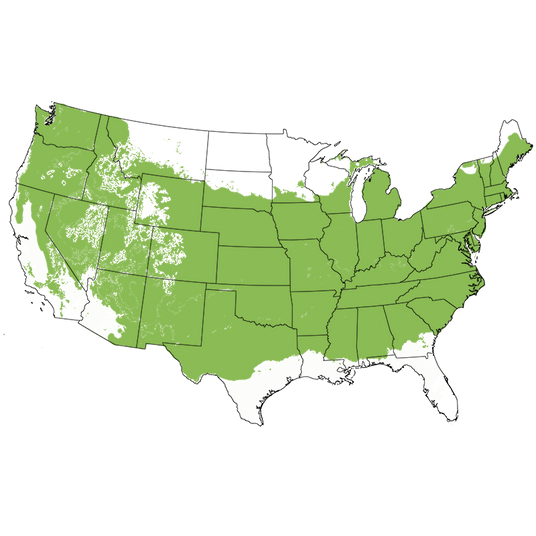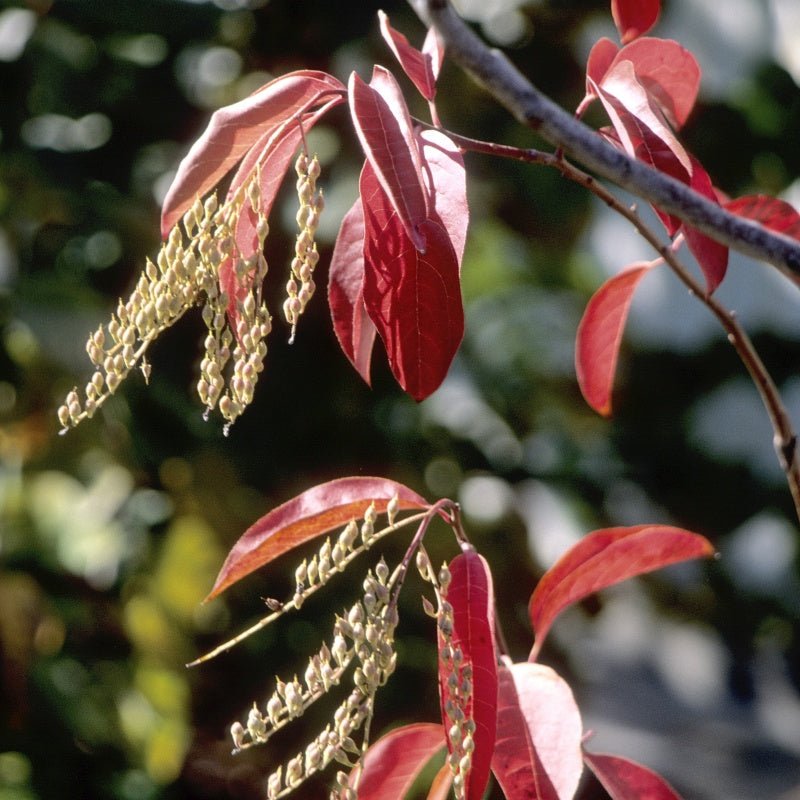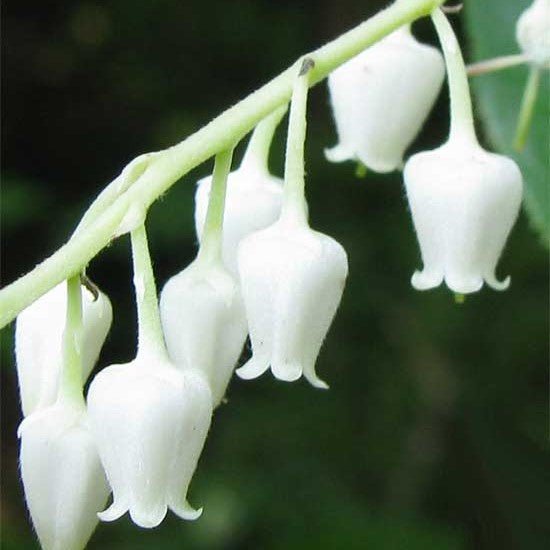Sourwood Tree
Oxydendrum arboreum
Plant Sentry™
Plant Sentry™

Plant Sentry™ Protected
Your order is protected by our compliance system that:
- Prevents restricted plants from shipping to your state
- Ensures plants meet your state's agricultural requirements
- Protects gardens from invasive pests and diseases
Delivery and Shipping
Delivery and Shipping
Delivery and Shipping
Fast, Safe Plant Delivery
Ships in 3-4 business days • Tracking provided • Weather protected
| Under $50 | $9.99 |
| $50 - $99.99 | $14.99 |
| $100 - $149.99 | $16.99 |
| $150 - $198.99 | $24.99 |
| $199+ | FREE |
✓ Zone-specific timing • ✓ Professional packaging • ✓ Health guarantee
Understanding Plant Options
Nature Hills offers plants in two main formats:
- Container Plants: Grown in pots with soil, sized by container volume and plant age
- Bare Root Plants: Dormant plants without soil, sized by height measurements
Container Plant Sizes
Container sizes indicate plant age and growing capacity rather than liquid volume equivalents. Our containers follow industry-standard nursery "trade gallon" specifications, which differ from standard liquid gallon measurements.
Young Plants (6 months to 18 months old)
| Container Size | Actual Volume | Metric Equivalent |
|---|---|---|
| 2" x 2" x 3" | 0.18 - 0.21 dry quarts | 0.20 - 0.23 dry liters |
| 4" Container | 0.31 - 0.87 dry quarts | 0.35 - 0.96 dry liters |
| 4.5" Container | 0.65 dry quarts | 0.72 dry liters |
| 6" Container | 1.4 dry quarts | 1.59 dry liters |
| 1 Quart | 1 dry quart | 1.1 dry liters |
| 5.5" Container | 1.89 dry quarts | 2.08 dry liters |
Established Plants (18 months to 2.5 years old)
| Container Size | Actual Volume | Metric Equivalent |
|---|---|---|
| 2 Quart | 2 dry quarts | 2.2 dry liters |
| #1 Container | 2.26 - 3.73 dry quarts | 2.49 - 4.11 dry liters |
| 5" x 5" x 12" | 3.5 - 4.3 dry quarts | 3.85 - 4.74 dry liters |
Mature Plants (2-4 years old)
| Container Size | Actual Volume | Metric Equivalent |
|---|---|---|
| #2 Container | 1.19 - 1.76 dry gallons | 5.24 - 7.75 dry liters |
| #3 Container | 2.15 - 2.76 dry gallons | 8.14 - 12.16 dry liters |
Large Plants (3-5 years old)
| Container Size | Actual Volume | Metric Equivalent |
|---|---|---|
| #5 Container | 2.92 - 4.62 dry gallons | 12.86 - 20.35 dry liters |
| #6 Container | 5.25 - 6.01 dry gallons | 23.12 - 26.42 dry liters |
| #7 Container | 5.98 - 6.53 dry gallons | 26.34 - 28.76 dry liters |
Bare Root Plants
Bare root plants are sold by height from the root system to the top of the plant. Plants may exceed minimum height requirements.
Common Sizes:
- Trees: 1 foot, 2 feet, 3 feet, 4 feet, 5 feet, 6 feet
- Shrubs & Perennials: 1 foot, 18 inches, 2 feet
Important Notes
Container Volume Specifications
- Trade Gallon Standard: Our containers follow industry-standard "trade gallon" specifications established by the American National Standards Institute (ANSI Z60.1) for nursery stock
- Volume Variations: Actual soil volume may vary due to plant root systems and growing medium settlement
- Age Indicators: Container size primarily indicates plant age and maturity rather than liquid volume equivalents
Growing Conditions
- Plant size can vary based on variety and growing conditions
- Container size helps indicate plant maturity and establishment level
- Larger containers generally mean more established root systems and faster landscape establishment
Seasonal Availability
- Bare root plants are available seasonally when dormant
- Container plants are available throughout the growing season
- Specific varieties may have limited availability in certain sizes
Questions?
For questions about specific plant sizes or availability, please contact our plant experts who can help you choose the right size for your landscape needs.

Plant Sentry™ Protected
Your order is protected by our compliance system that:
- Prevents restricted plants from shipping to your state
- Ensures plants meet your state's agricultural requirements
- Protects gardens from invasive pests and diseases
Plant Profile & Growing Essentials
Cold hardy, Native, Flowering, Fragrant, Fall Color/Interest, and Thornless
Specifications
Specifications
-
Botanical Name
-
Height
-
Width
-
Growing Zones
-
Sunlight
-
Growth RateSlow
-
Flower Color
-
Leaf Color
-
Fall Color
-
NativeYes
-
Pollinator FriendlyYes
-
Bloom PeriodEarly Summer, Late Summer
-
FragrantYes
-
Does Not Ship ToAK, HI, ID, MT, OR
Planting & Care Instructions
Planting & Care Instructions

Growing Zones 5-8
Excellent Fall Color Ornamental - Sourwood Honey Tree
If you want a compact tree that has it all—refreshing shade to fragrant flowers and amazing fall color — take a good look at Sourwood (Oxydendrum arboreum). This deciduous tree features year-round ornamental features, and arguably offers the best fall color of the native trees.
With pretty summer flowers and an ideal size for modern lots, Sourwood is a superb choice for a shade or accent tree in yards with dry, acidic soils. It has a romantic weeping appearance, with slightly downturned branches. Even the leaves and the sweet flower clusters dip towards the ground.
As spring recedes and summer begins, 8-inch long glossy green leaves cover the Sourwood tree. The large, bright green leaves are elliptical with a slightly wavy margin when studied up close. From a distance, the leaves look smooth and streamlined. They actually taste sour, inspiring the name "Sourwood".
Fragrant white flowers bloom in early summer on long panicles. At this unusual time of year, any flowering tree is a welcome sight both to you and to your pollinators! Honeybees adore the tiny, urn-shaped, white blossoms that are held along a long stalk in large sprays that emerge from the branch tips. The sweet blooms grow on the downward side of their drooping stems, which give them a lyrically old-fashioned charm.
No wonder people have nick-named this the Lily-of-the-Valley tree!
The large leaves really shine when dressed in their autumn finery. The summer green deepens into a wonderful mix of scarlet, burgundy, yellow, and brilliant crimson red that is sure to turn every head in the neighborhood.
The flower sprays transition to ornamental sprays of gray seed capsules, which contrast beautifully against the scarlet leaves. They'll hang on the tree for added interest after leaf drop in winter and provide needed sustenance for squirrels, birds, and other wildlife.
Even the strongly patterned bark is attractive. You'll be amazed how much visual impact is displayed as the deep furrows create an interlaced, blocky texture. This is a distinctive, memorable tree that looks great all year long.
Sourwood is a delightful tree that deserves to be placed front and center as a four-season accent. Add yours to start enjoying this beautiful and beneficial addition to your landscape. Order today!
How to Use Sourwood Tree in the Landscape
Growing as an understory plant in native forests in the Eastern United States, the tree will tolerate a fair amount of shade. However, the amount of shade may affect flower production and the dynamic fall color and this shade will also affect the trunk.
In full sun, it most often grows straight and true with a narrow crown, becoming the shade tree. As trees mature in shade, they can develop twisting and turning trunks as they reach for the sun. It gives them a sculptural effect. Allow the Sourwood to develop into a living work of art in your landscape.
With its year-round appeal and reasonable height, the tree is suited to many landscape applications. From woodland gardens to creek-side plantings or even in a rain or shade garden, the Sourwood makes a perfect choice to include for a shade or accent tree.
Try it as an irrigated lawn tree for a high-impact look. Be prepared to answer questions about your beautiful tree. You'll be proud you chose this lovely native for your landscape.
The bees love the summer flowers, too. Sourwood honey is highly prized as superior among gourmet chefs. If you have a large property or homestead, include Sourwood and keep beehives. Sourwood honey is a valuable delicacy and is in high demand at farmer's markets and as an online product offering.
Plant a grove for a wonderful view from the deck or out of the family room windows. Plant the trees from 7 to 8 feet apart on center. You'll measure from the center of one to the center of the next.
Use an odd number of trees and keep the planting pattern loose and natural for excellent results. Try curving the planting to follow the natural contouring lay of your land. If your yard is flat, consider creating a raised berm to boost the impact of an informal grouping.
- Incredible Fall Color Display on Large Leaves
- Eye-catching Summer Flowers Look Like Lily of the Valley
- Outstanding Shade Tree
- Wonderful Architectural Presence in the Landscape
- Deeply Furrowed Bark Adds Texture and Winter Interest
- Long-Lived Selection
- Native to North America
- Valuable Sourwood Honey
#ProPlantTips for Care
Pest and disease-free, the Sourwood tree is a very easy-to-grow deciduous tree and a breeze to care for when planted in the right location. It is native to the acidic slopes of the Appalachian Mountains.
Sourwood is a member of the Heath family and is related to Blueberries and Azaleas. As you might imagine, it grows beautifully in acidic soils with a lower pH of 5.5 to 6.5. It will not thrive in alkaline soils without serious amendment, although it will tolerate neutral pH soils. Give it well-drained soil.
Sourwood does not tolerate drought for any period of time. Provide your tree with a moderate amount of regular water.
It's also called the Sorrel Tree, which is an ancient word that means 'sour tasting'. While you may not enjoy the sour taste of its leaves, you'll love their dark green shade and their knock-out color performance in fall.
- Full Sun & Partial Shade
- Well-Drained Soil - Tolerates Acidic Sites
- Moderate Moisture Needs
- Prune When Dormant
- Hardy Native Tree
Enjoy this magnificent native tree. Order your Sourwood Tree today!












